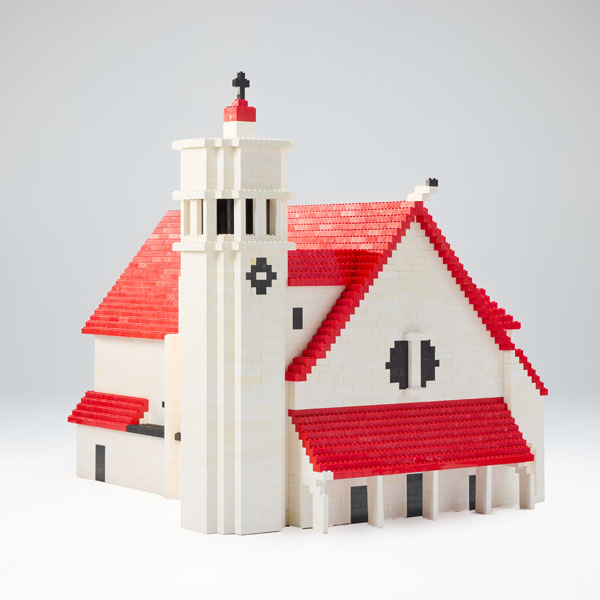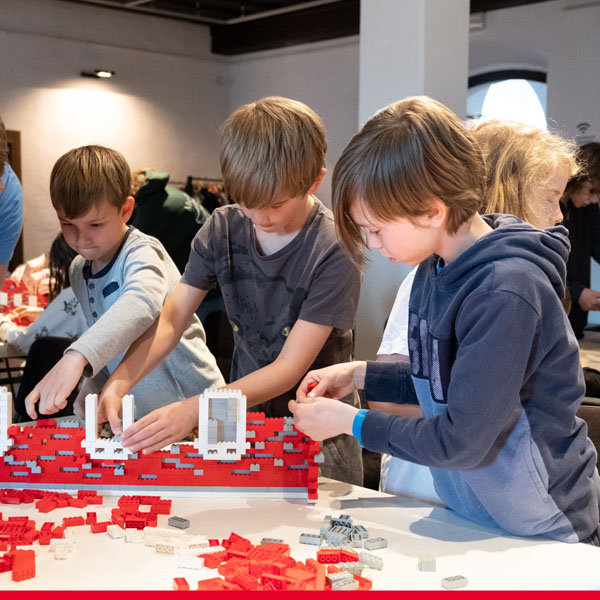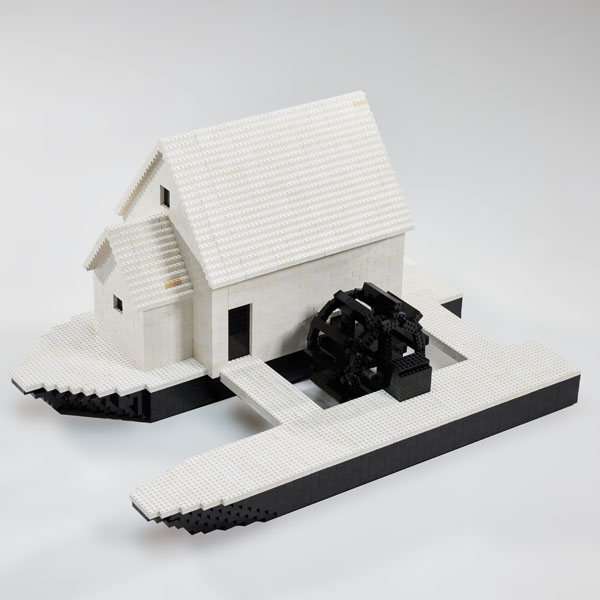Editorial
Janez Peter Grom: Reflection on year-long research efforts in light of interdisciplinary insights Read more ...
University of Ljubljana, Faculty of Architecture, SloveniaThe finalisation of the journal at the end of the year is an excellent process that demonstrates the year-round effort to find research activities that, in light of their implementation, meet again and again with the creative spirit of the authors. Indeed, all the topics discussed and presented show a remarkable degree of originality in the conduct of thorough research, the study of theory, the application to student workshops, and a range of other activities that prove necessary when taking into consideration the desire to develop the creative spirit.
Some of the research and themes explored in the process even trigger the need for further development or research themselves, thus following on from some of the thoughts and ideas already presented in the previous journal. The results of the »Lego-Plečnik« workshop, which we continued in 2023, proved to be of lasting relevance, involving many other actors in its circle of activities during the year. In the new year, the workshop will continue in the interpretation of the works of the architect and urbanist Edvard Ravnikar.
The research on conflict zones in light of the Rapallo border and the associated defence systems has also proven to be of urban and social relevance. Within the context and working framework of the ARIS core projects, the research has developed new dimensions in understanding this type of spatial challenge by working with urban planners, architects, historians, humanists, and geographers. The project »Rapallo Border: a quarter of a century of existence and a century of heritage and memory« is ongoing and, with an interdisciplinary approach, continues to bring new findings with each new research step.
This once powerful and now forgotten spatial reality has permanently marked the space from Triglav to the Gulf of Rijeka in its materialisation. With the move of the sixth defensive section of the Rupnik Line along the northern border of the Kingdom of Yugoslavia, it also marked the Slovenian mountain range from the slopes of the mountains above Lake Bohinj to Šentilj, and south as far as Ptuj and on to Maribor, and the easternmost fortified position at Hodoš. It is only through observation and field exploration of the remains that we can experience the real significance of this once mighty defensive infrastructure. The very process of searching for, or exploring, the remains of fortifications in difficult and inaccessible locations is evidence of the effort a nation has made to protect its own existence. As permanent markers of space, the remains are reminders of these historical flows, and, just as they once influenced spatial development, they remind us that they are still an active factor today.
The relevance of researching this topic appears to be very limited when only reviewing and comparing the references and related European cases available in the literature. Observing similar spatial elements in Europe, which in many ways served as a conceptual basis for the builders of the Rupnik Line, offers a real glimpse back into the past through the experience of space and a basis for reflection on the role of these monolithic and mighty fortifications in contemporary space.
Looking at the contemporary contextualisation of different societies provides a comparative basis from which creative thoughts can be formulated to make sense of these national heritage monuments. The mighty air defence fortifications in Kiel in the north of Germany, which silently testify to the exceptional harbour role of the German Navy more than 70 years ago, followed very different social ideals despite their different purposes and their construction. Today, these present a challenge of spatial issues that is similar to the one posed by the fortifications of the Rupnik Line, when it crossed urban areas. Field observation thus turns out to be a process of understanding related challenges for the present and the future on elements that once physically or figuratively stood opposite each other.
Happy reading magazine no. 11/2023.
Papers
Ivan
Čuk, Barbara Viki Šubic, Ljudmila Koprivec, Martina Zbašnik-Senegačnik:
Comparison of the Opinions of School Management and Students of the Faculty of Sports on the Use of School Spaces for Physical Activity
 IU/CG, 11/2023, 14-20. https://doi.org/10.15292/IU-CG.2023.11.014-020
IU/CG, 11/2023, 14-20. https://doi.org/10.15292/IU-CG.2023.11.014-020
Janez Peter Grom, Kristijan Lavtižar, Tomaž Pipan:
Legibility of Built Space and the Method for Determining Architecturally Conditioned Spatial Identity – MAPPI
 IU/CG, 11/2023, 22-30. https://doi.org/10.15292/IU-CG.2023.11.022-030
IU/CG, 11/2023, 22-30. https://doi.org/10.15292/IU-CG.2023.11.022-030
Ljudmila Koprivec, Martina Zbašnik-Senegačnik:
The Sustainable School as a Place for Environmental Education
 IU/CG, 11/2023, 32-39. https://doi.org/10.15292/IU-CG.2023.11.032-039
IU/CG, 11/2023, 32-39. https://doi.org/10.15292/IU-CG.2023.11.032-039
Aleš Švigelj, Marko Lazić, Alenka Fikfak, Tomaž Novljan:
Does Building Identity Still Exist? Does The Building Identity Needs to be Redefined?
 IU/CG, 11/2022, 40-47. https://doi.org/10.15292/IU-CG.2023.11.040-047
IU/CG, 11/2022, 40-47. https://doi.org/10.15292/IU-CG.2023.11.040-047
Simon Koblar, Domen Kušar, Matej Nikšič:
The Challenges of Defining the Borders of the Areas of Architectural Identity
 IU/CG, 11/2023, 48-55. https://doi.org/10.15292/IU-CG.2023.11.048-055
IU/CG, 11/2023, 48-55. https://doi.org/10.15292/IU-CG.2023.11.048-055
Marius Gatouillat, Matej Nikšič:
The culture of urban space occupation in Ljubljana or how do the citizens appropriate the city through bottom-up approaches
 IU/CG, 11/2023, 56-65. https://doi.org/10.15292/IU-CG.2023.11.056-065
IU/CG, 11/2023, 56-65. https://doi.org/10.15292/IU-CG.2023.11.056-065
Manca Gjura Godec, Matej Nikšič:
Empowering Public Engagement in Spatial Planning: A Collaborative Mapping Approach
 IU/CG, 11/2023, 66-71. https://doi.org/10.15292/IU-CG.2023.11.066-071
IU/CG, 11/2023, 66-71. https://doi.org/10.15292/IU-CG.2023.11.066-071
Short Scientific Articles
| Špela Verovšek: Towards Networked Artistic Practices in Placemaking | UDK: 711:011.83 | page 72-75 |
| Aleš Švigelj, Alenka Fikfak: Sustainable Accessible Future Environments (SAFE) | UDK: 711.4:72.051 | page 76-79 |
| Mitja Zorc, Martina Zbašnik-Senegačnik, Mojca Gregorski: The Development of Guidelines for Designing Quality Contemporary School Architecture with the Goal of Supporting a Comprehensive Sustainable Living and Working at School | UDK: 727:373:502.131.1 | page 80-83 |
Workshops and Undergraduate Thesis
| WORKSHOPS | ||
| Settlement Typologies of Prekmurje | page 86 | |
| Transformations of the Settlement Beltinci | page 88 | |
| Intensive Study Week Kranj | page 90 | |
| "A-RE-PLACE" - Placemaking Through Reuse | page 92 | |
| Conceptual Design of a Mobile Living Unit for one Person - A Step to Long-term Care | page 94 | |
| Mapping Inequalities International Week | page 96 | |
| Intensive Study Week - ISP Kiel | page 98 | |
| LEGO Beltinci: Knowing Slovenian Architecture Through Playing | page 100 | |
| LEGO Plečnik: Knowing Slovenian Architecture Through Playing | page 102 | |
| LEGO Ravnikar: Knowing Slovenian Architecture Through Playing | page 104 | |
| Accommodation Facilities For The Camp On Mazijev Grič By Lake Gradiško | page 106 | |
| REMOBIL - International Summer School on Sustainable Mobility for Students | page 108 | |
| UNDERGRADUATE THESIS | ||
| Filip Živković: Urban Block Typologies and Parametric Design: The New Belgrade Case | page 84 |
FULL VOLUME
PDF (10.66M) DOI: 10.15292/IU-CG.2023.11


